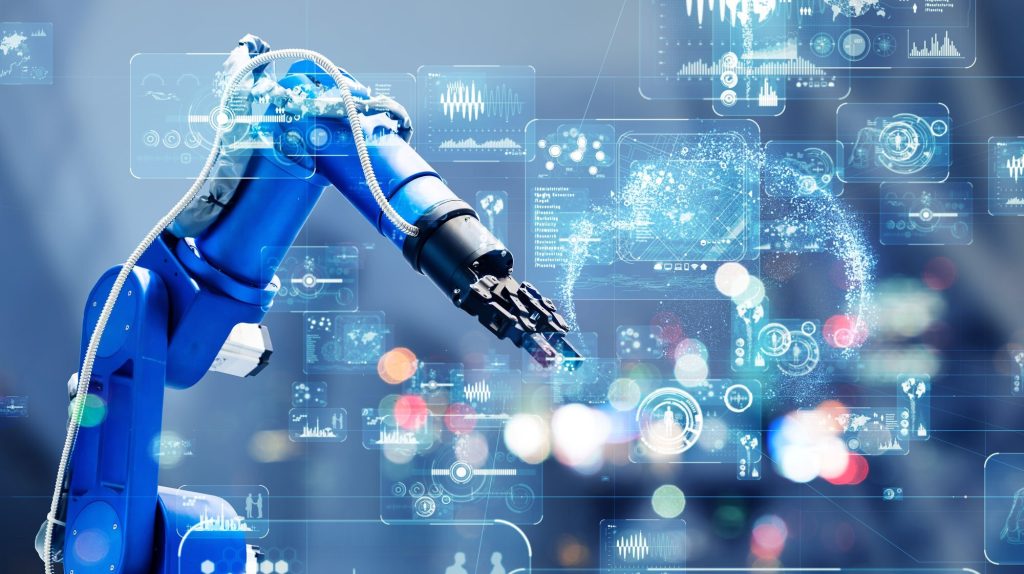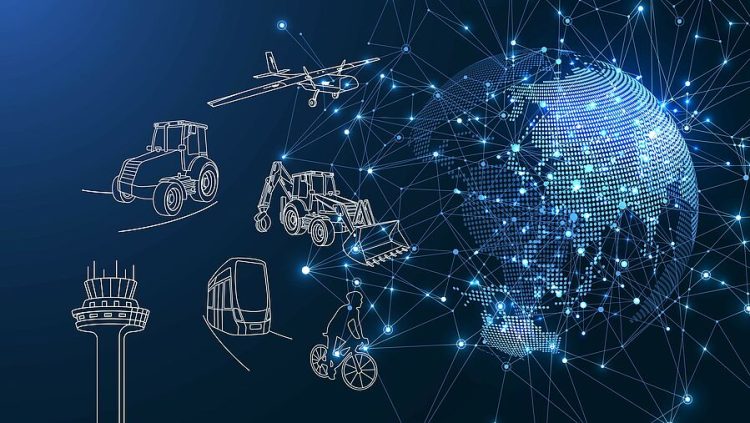Introduction: The New Era of Mobility
Transportation has always been one of the primary forces shaping human civilization. From the invention of the wheel to the rise of the combustion engine, every technological leap in mobility has redefined how people, goods, and ideas move through the world. Today, we stand on the threshold of another seismic shift—the rise of autonomous mobility.
Powered by artificial intelligence (AI), machine learning, and advanced sensor systems, autonomous vehicles (AVs) and drones promise to revolutionize transportation by increasing efficiency, reducing accidents, and reshaping cities themselves. But as with all revolutions, the implications stretch beyond technology—they challenge our infrastructure, ethics, and social norms.
This article explores the evolution, challenges, and societal impacts of autonomous mobility. It examines how driverless cars, unmanned aerial vehicles (UAVs), and intelligent transport networks are merging into a new ecosystem where mobility becomes not merely automated but intelligent and adaptive.
1. The Foundations of Autonomous Mobility
Autonomous mobility depends on a convergence of technologies—sensing, perception, computation, and decision-making—that collectively allow a machine to perceive its environment and act safely within it.
1.1 Sensors and Perception Systems
At the core of every autonomous vehicle is its sensory system. Cameras, LiDAR (Light Detection and Ranging), radar, and ultrasonic sensors continuously capture the environment. Through sensor fusion, the vehicle constructs a 3D model of the world in real time. LiDAR, for instance, uses laser pulses to measure distance and create detailed maps of surroundings, allowing precise obstacle detection even under low-light conditions.
1.2 Machine Learning and Decision-Making
While sensors “see,” algorithms “think.” Deep learning models interpret visual and spatial data to detect pedestrians, predict vehicle movement, and plan safe routes. Reinforcement learning techniques allow autonomous agents to improve performance through experience—similar to how humans learn through trial and error.
1.3 Edge Computing and Cloud Integration
To achieve real-time performance, autonomous systems rely on edge computing—processing data locally within the vehicle—combined with cloud-based updates for large-scale coordination and mapping. This hybrid architecture ensures both speed and collective intelligence, enabling cars to “learn” from one another through data sharing.
2. The Road to Self-Driving Vehicles
The concept of autonomous vehicles has evolved through five levels of automation, as defined by the Society of Automotive Engineers (SAE):
- Level 0: No automation – the human driver performs all tasks.
- Level 1–2: Partial automation – driver-assist features like adaptive cruise control and lane-keeping.
- Level 3: Conditional automation – vehicles handle most functions but require human oversight.
- Level 4: High automation – cars can drive independently in defined conditions.
- Level 5: Full automation – complete autonomy under all road conditions.
As of 2025, most commercial applications remain at Level 3 or 4, with companies like Waymo, Tesla, and Baidu pushing the boundaries.
2.1 Testing Grounds and Real-World Pilots
Cities like Phoenix, Beijing, and Singapore have become real-world laboratories for autonomous driving. Waymo’s fully driverless taxis in Arizona, for instance, operate without human safety drivers, providing a glimpse of what a fully autonomous transport ecosystem might look like.
2.2 The Economics of Autonomy
The shift to autonomous vehicles carries enormous economic implications. By reducing human labor, logistics firms like FedEx and Amazon are testing self-driving trucks and delivery robots to cut costs. A 2023 McKinsey report estimated that autonomous mobility could create a global market worth over $2 trillion annually by 2035, reshaping industries from insurance to urban planning.
3. Urban Transformation: Smart Cities and Infrastructure
The rise of autonomous mobility is intertwined with the vision of smart cities. As vehicles become intelligent, so must the infrastructure around them.
3.1 Vehicle-to-Everything (V2X) Communication
Autonomous vehicles rely not only on onboard sensors but also on communication with other vehicles and infrastructure. V2X technology enables vehicles to exchange data about speed, position, and road conditions, preventing collisions and optimizing traffic flow.
3.2 Redesigning Urban Space
Cities could see radical transformations in land use. With driverless cars reducing the need for parking, vast urban spaces could be repurposed for housing, green areas, or public spaces. Traffic lights and signage might become obsolete as vehicles coordinate digitally, while urban noise and pollution could dramatically decline with the rise of electric autonomous fleets.
3.3 Public Transit and Shared Mobility
Autonomous shuttles and buses could make public transportation more flexible and accessible. Rather than fixed routes, these systems could dynamically adjust to demand, reducing congestion and improving sustainability. Shared autonomous vehicles (SAVs) represent a hybrid model, combining the efficiency of mass transit with the convenience of private vehicles.
4. The Aerial Dimension: Drones and Urban Air Mobility
Beyond roads, autonomy is transforming the skies.
Unmanned aerial vehicles (UAVs) are poised to become a cornerstone of the next mobility revolution—particularly in logistics, emergency response, and passenger transport.
4.1 Drones in Logistics and Delivery
Companies like Amazon Prime Air and Zipline have pioneered drone delivery systems capable of transporting packages to remote or congested areas within minutes. These aerial systems bypass ground traffic entirely, offering both speed and environmental benefits.
4.2 Air Taxis and Vertical Mobility
Urban Air Mobility (UAM) envisions electric vertical takeoff and landing (eVTOL) aircraft that transport passengers across cities. Firms like Joby Aviation and Volocopter are testing prototypes that could one day connect airports to downtown districts in minutes, creating an entirely new layer of urban transport infrastructure.
4.3 Regulatory and Safety Challenges
However, the deployment of autonomous aerial systems faces steep regulatory hurdles. Airspace management, collision avoidance, and privacy concerns must be addressed before mass adoption. The future of autonomous flight will depend on robust governance and international standards.

5. Ethical, Legal, and Social Implications
Autonomous mobility raises profound ethical and legal questions.
Who is responsible when a self-driving car causes an accident—the manufacturer, the programmer, or the passenger? How do we program moral choices in machines that must make split-second life-and-death decisions?
5.1 Algorithmic Morality
The so-called “trolley problem” has re-emerged in the context of AI ethics. Should a vehicle prioritize passenger safety or pedestrian welfare? These dilemmas highlight the need for transparent algorithmic design and ethical frameworks that reflect societal values.
5.2 Data Privacy and Surveillance
Autonomous vehicles collect vast amounts of data on location, behavior, and environment. Without stringent privacy protections, this data could be misused by corporations or governments. Balancing innovation with civil liberties will be central to building public trust.
5.3 Labor and Economic Displacement
Millions of drivers worldwide could be displaced by autonomous fleets. Policymakers will need to anticipate workforce transitions through retraining and new job creation in AI oversight, maintenance, and cybersecurity.
6. Sustainability and the Environment
Autonomous mobility has the potential to make transportation more sustainable—but only if implemented wisely.
6.1 Energy Efficiency and Electrification
By integrating with electric powertrains, autonomous vehicles can reduce emissions and optimize energy consumption through smoother driving patterns. Fleet-level coordination could minimize congestion and idle time, further cutting carbon output.
6.2 Rebound Effects
Yet, the increased convenience of driverless cars could paradoxically increase total travel demand—a phenomenon known as the rebound effect. Without policies that encourage shared rides and public transit integration, autonomy might worsen urban sprawl and energy use.
6.3 Green Logistics and Last-Mile Solutions
Drones and autonomous delivery robots could make last-mile logistics cleaner and faster, particularly in densely populated cities. The synergy between autonomy and renewable energy sources (e.g., solar-powered charging networks) will define the ecological footprint of future mobility.
Conclusion: Navigating the Autonomous Future
Autonomous mobility represents more than a technological upgrade—it is a societal transformation.
As vehicles learn to see, decide, and move independently, humanity must learn to govern and coexist with them responsibly. The road to autonomy will be paved with breakthroughs and setbacks, but its direction is clear: toward a world where movement is safer, smarter, and more sustainable.
The challenge ahead lies not only in perfecting algorithms or sensors but in reimagining the social contract of transportation. If guided wisely, autonomous mobility can lead us to a future where cities breathe easier, people travel more freely, and technology serves not as a replacement for human agency—but as an extension of it.











































